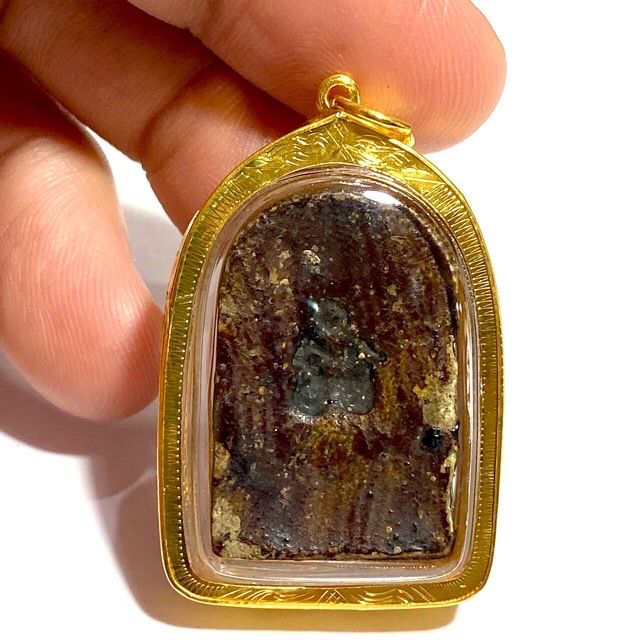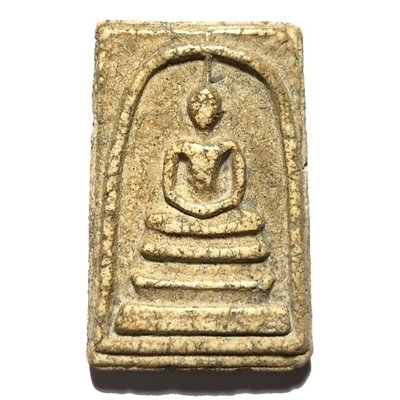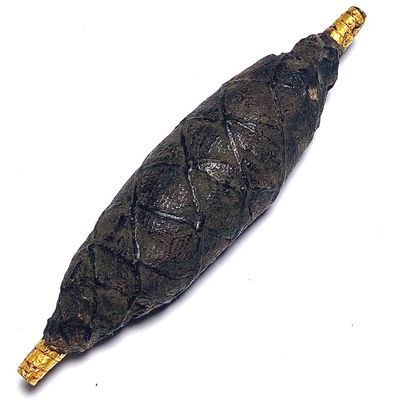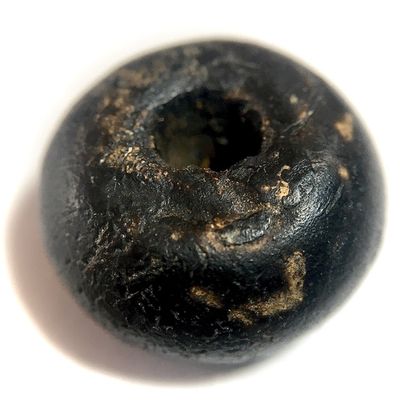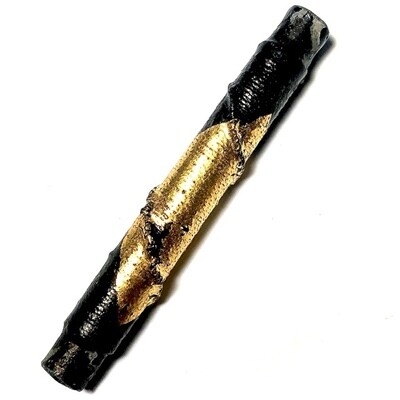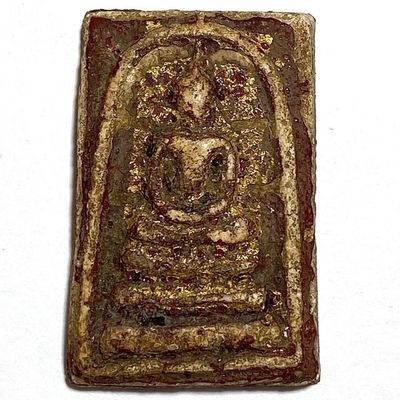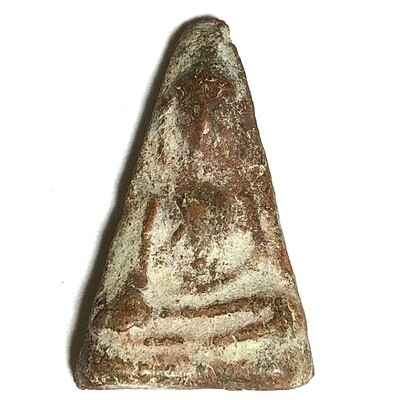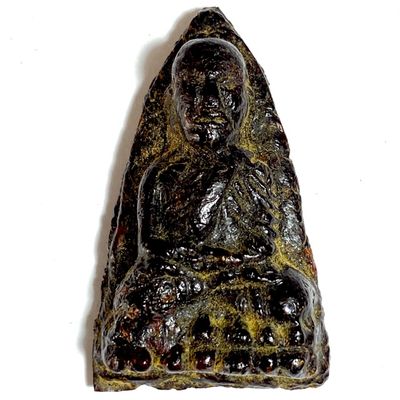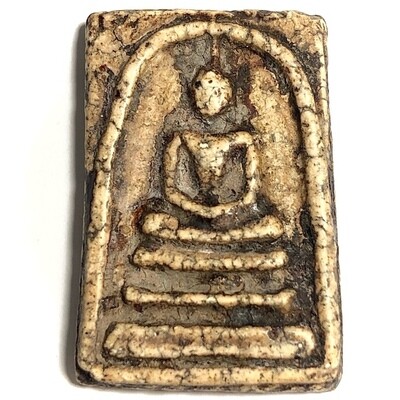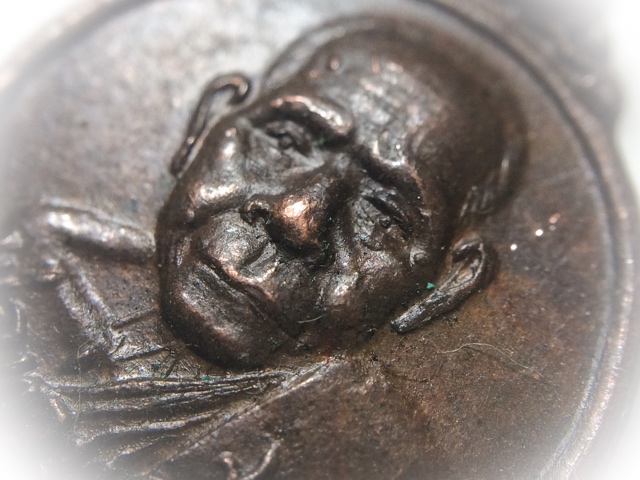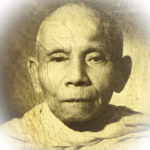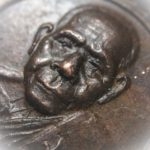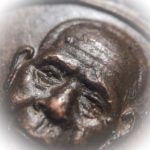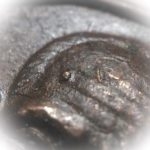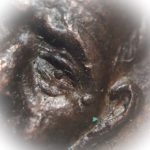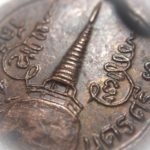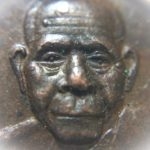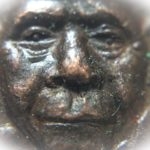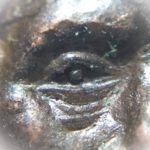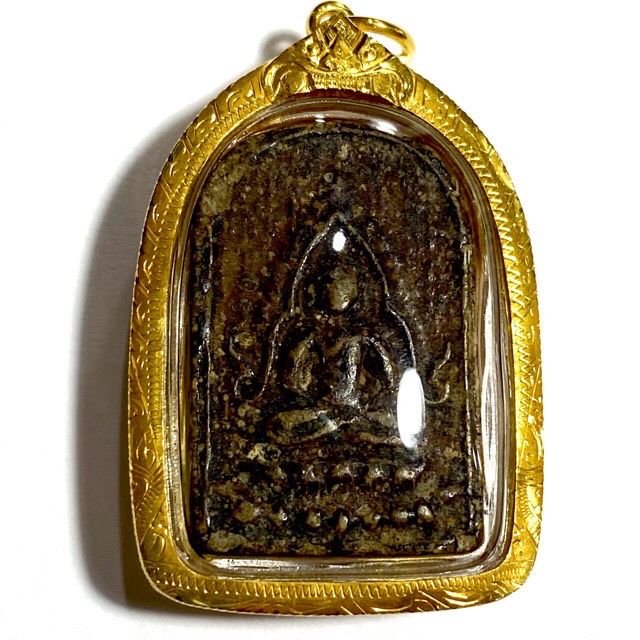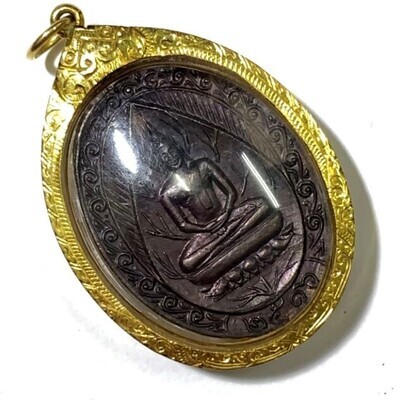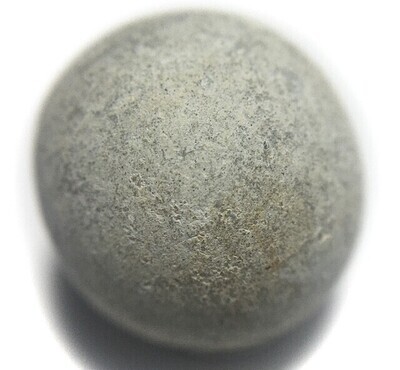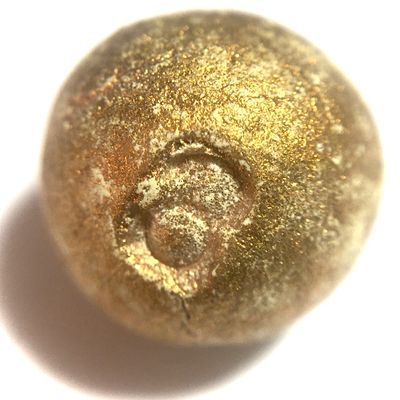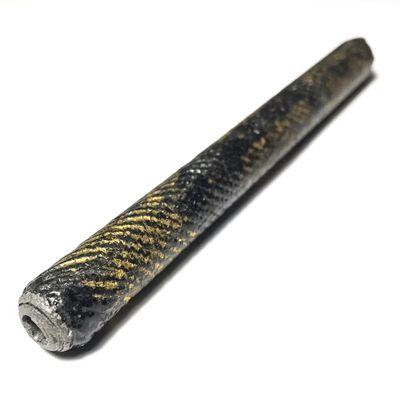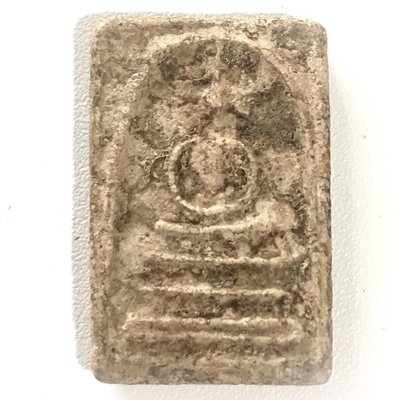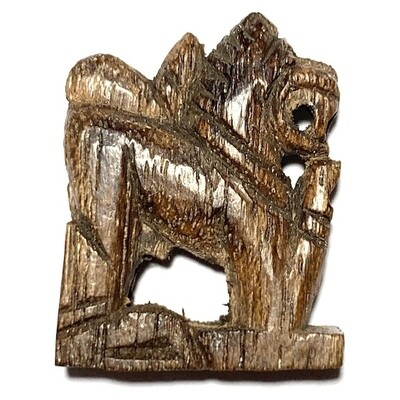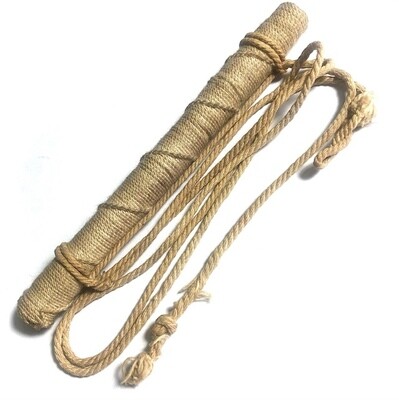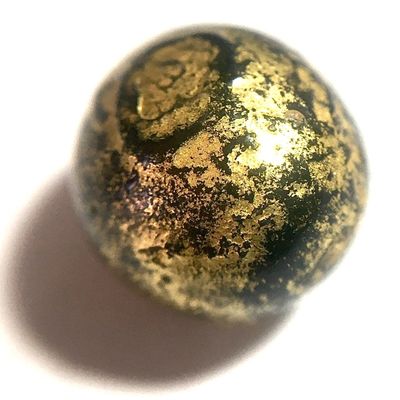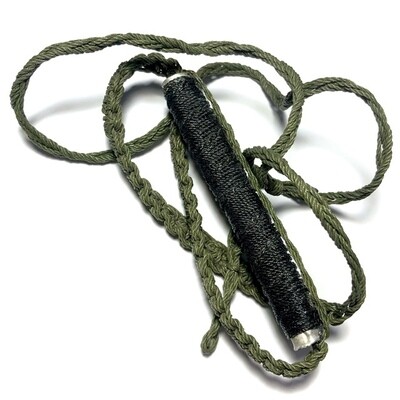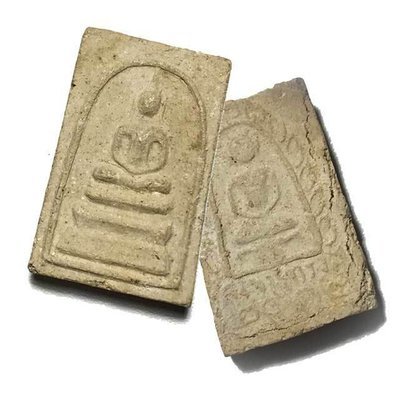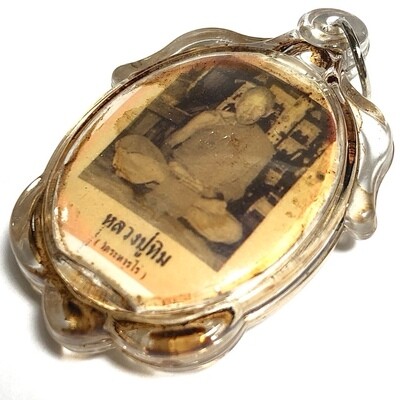Presenting a tiny but powerful and rare classic amulet from one of the Great Khao Or Masters of the 20th Century, Rian Glom Lek Hlang Chedi 2505 BE Nuea Tong Daeng Miniature Guru Monk Coin Por Tan Klai Wajasit
This Sacred amulet of the Great Khao Or Master of Nakorn Sri Tammarat, Master of Wat San Khan and Wat Pratat Noi, is a very rare amulet from Por Tan Klai’s 2505 BE Blessing Ceremony Edition, and is considered a ‘Jaek mae Krua’ type amulet (meaning ‘give to the kitchen maids and temple helpers’), which is suitable not only for men, but due to its miniature size, a perfect amulet for ladies or children to wear.
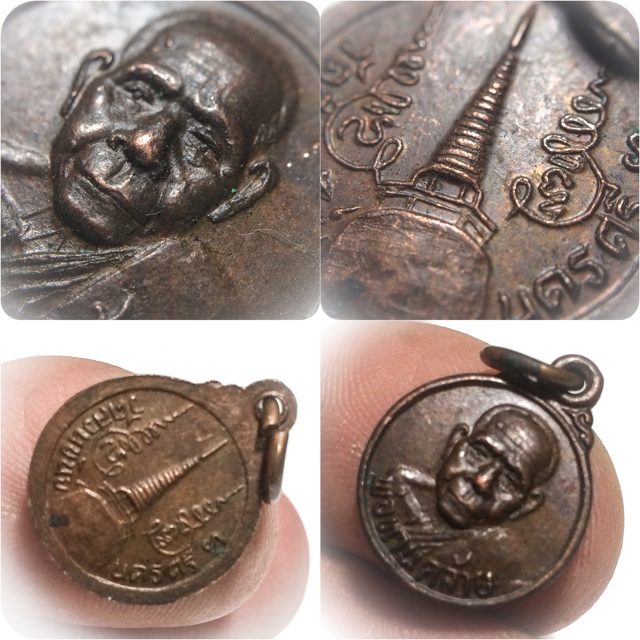
Rian Glom Lek 2505 BE Por Tan Klai Wajasit Wat Suan Khan
The 2505 BE edition of amulets of Por Tan Klai, is a highly preferred edition, which saw his famous ‘Rian Glom’ round Monk coin amulet with Chakra released, The Rian Glom Lek Hlang Chedi, and the Roop Tai Por Tan Klai Guru Monk Blesséd Photographamulets such as look om chan hmak and ya sen tobacco balls, and sacred powder amulets of various models.
A very rare and highly prized amulet for the devotees of Por Tan Klai to associate with his image and pray to him with a blessed image of the Guru, and the Chedi Relic Stupa on rear face for Buddhanussati and Marananussati. A powerful and Sacred amulet which has passed through the hands of the Guru and been blessed by him.
Por Tan Klai was one of the Top Guru Master Monks of the Last Century, and is considered one of the Four Great Masters of the Previous Generation of Lineage Masters of the Khao Or Southern Sorcery Lineage.
Kata Bucha Por Tan Klai
Pra Pong Rasamee Putta Chinarat 2475 BE Nuea Pong - Tan Jao Chuy Wat Sam Plerm
Pra Putta Chinarat (Pra Pong Rasamee) by Venerable Jao Chuy, Wat Sam Plerm, B.E. 2475 This syopsis, aims to present in-depth information about this particular amulet series, adhering strictly to verifiable evidence only, following the directive: "Stick to authentic information, don't fabricate anything. When study materials are exhausted, don't add distorted content" - a fundamental truth in amulet collecting, especially in an era where information is abundant and mixed together.
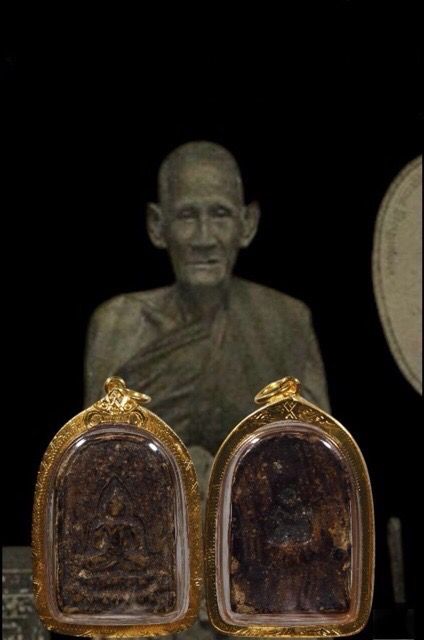
Furthermore, from preliminary research, although the question refers to "Pra Putta Chinarat," verifiable sources predominantly refer to this series as "Pra Pong Rasamee" and "Pra Leb Mer," with the full name being "Pra Phim Leb Mer Sum Chinarat." This is an important point that must be thoroughly understood in the report details to ensure accuracy according to popular usage in the field.
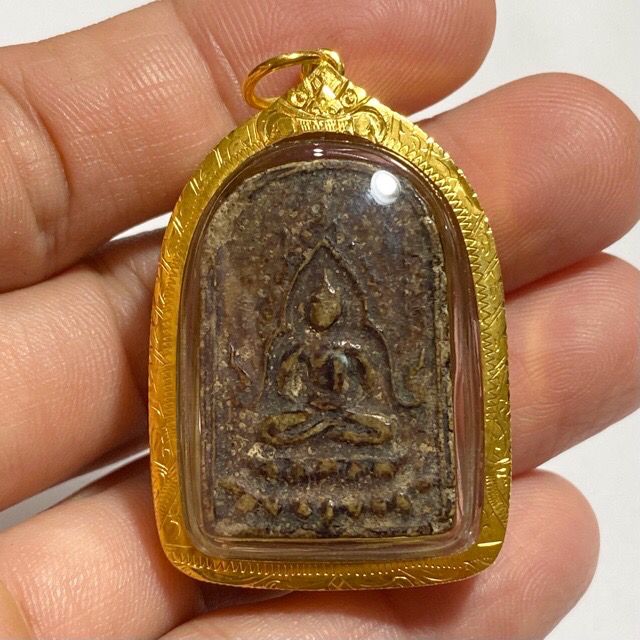
1: The Genesis of the Sacred Lineage: History of Pra Mongkol Tipyamuni (Venerable Jao Chuy) and Pra Pong Rasamee B.E. 2475
1.1 Brief History of Wat Chakrawat Rachawat (Wat Sam Plerm)
Wat Sam Plerm, officially known as Wat Chakrawat Rachawat Woramahawihan, is an ancient temple dating back to the Ayutthaya period. Originally called Wat Nang Plerm or Wat Sam Plerm, it was later renovated in B.E. 2362 by Jao Praya Bodin decha (Singh Singha senee) and received a new royal name from King Rama III in B.E. 2368.
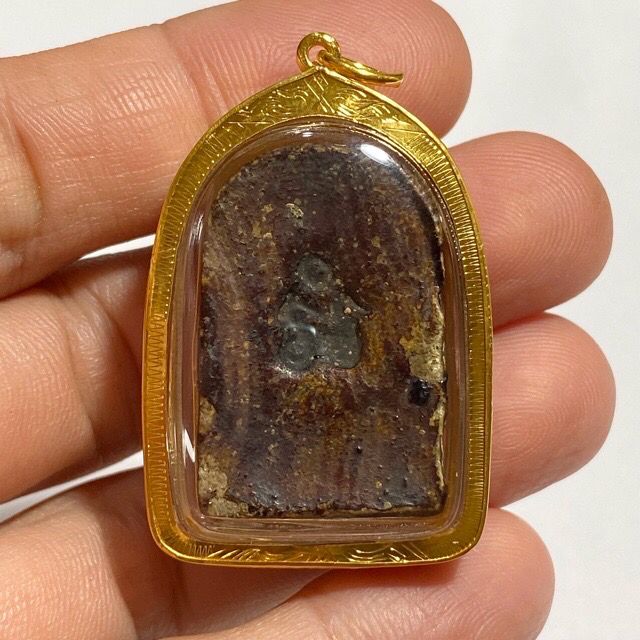
The creation of this amulet series in B.E. 2475 occurred during a significant period of historical change in Thailand - the Siamese Revolution of 1932, which transformed the government system from absolute monarchy to constitutional monarchy. While there is no direct evidence linking this amulet creation to these events, the social and political turbulence of this period created uncertainty, making it a time when people sought spiritual anchors. The creation of sacred objects thus held special significance as spiritual guidance through difficult times, adding social value to amulets created during this era.
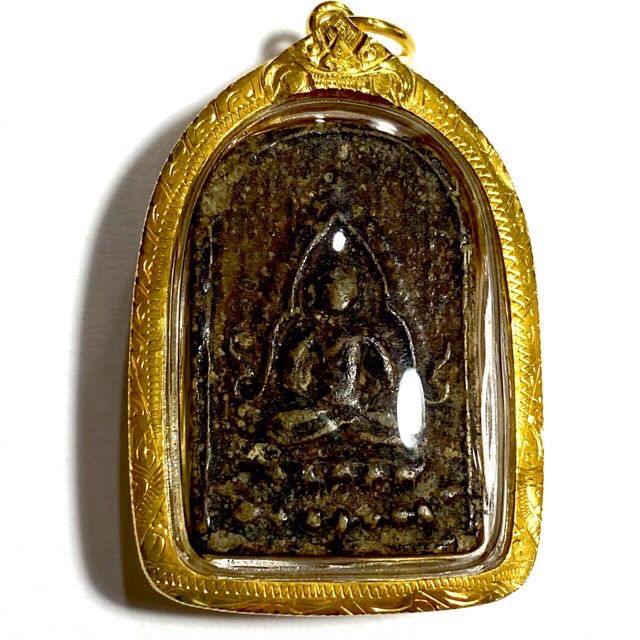
1.2 Biography and Sacred Lineage of Pra Mongkol Tipyamuni (Venerable Jao Chuy)
Pra Mongkol Tipyamuni (Venerable Jao Chuy) of Wat Sam Plerm was a highly revered monk of his era, renowned for his expertise in Vipassana meditation. Most importantly, he was a direct disciple who inherited the sacred knowledge from Venerable Jao Ma of Wat Sam Plerm, the great master who created the legendary Pra Chaiwat amulets that remain highly sought after today.
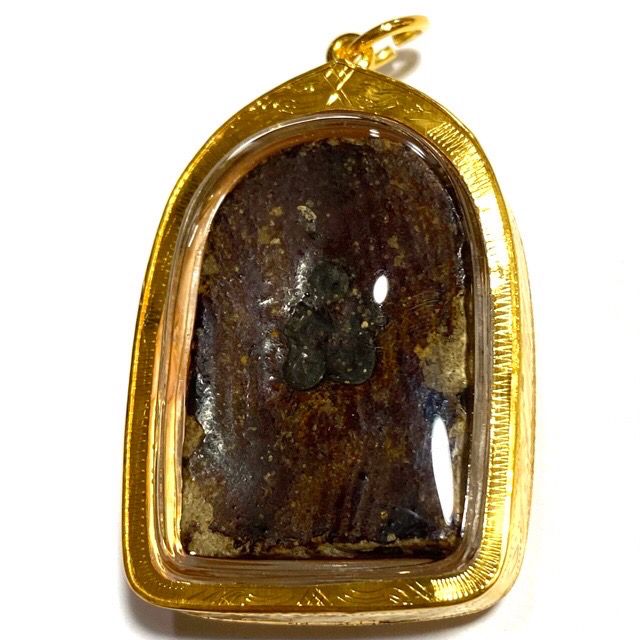
Being a close disciple of Venerable Jao Ma was not merely historical information but the heart that determined this amulet series' value. Direct succession meant receiving transmission of both amulet-making techniques and sacred mystical knowledge. This connection is why Venerable Jao Chuy's Pra Pong Rasamee gained widespread acceptance and is confirmed to be able to "substitute" for Venerable Jao Ma's amulets with complete confidence, without doubting the inherited sacred properties.
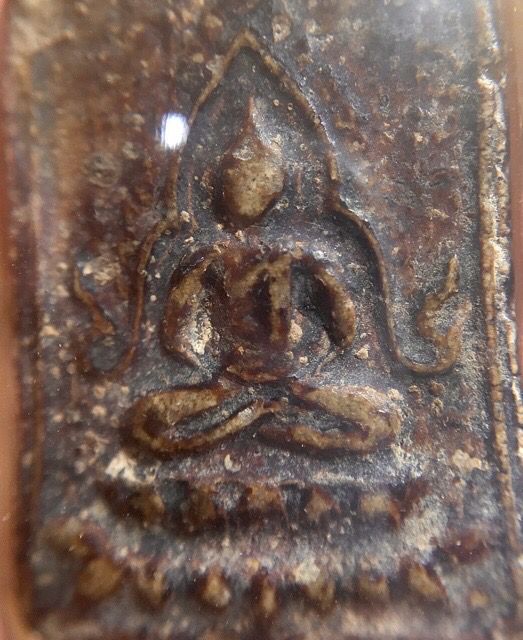
2: The Essence of Sacred Power: Materials and Creation of Pra Pong Rasamee B.E. 2475
2.1 Primary Material Components
The sacred objects created by Venerable Jao Chuy in B.E. 2475 were powder amulets made with materials crucial to the amulet world, consisting of "powder from burned old palm leaf manuscripts" mixed with "fragments of many broken ancient Buddha images from Wat Sam Plerm." Most specimens found have powder mixed with or dipped in lacquer, giving them black or dark brown colors, though some rare white powder dipped in lacquer specimens exist.
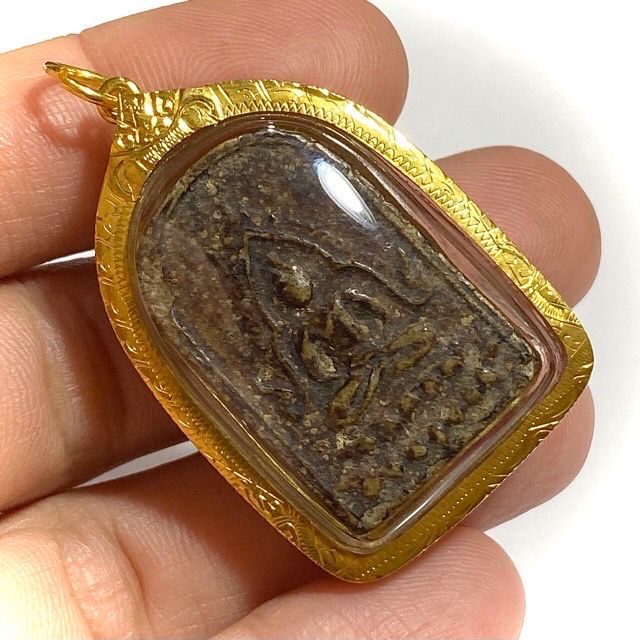
2.2 Sacred Material Transformation from Ancient Objects
Using fragments of broken ancient Buddha images from Wat Sam Plerm as primary materials was not merely recycling old materials but transmitting sacred power in physical form. Since the early Buddha images of Wat Sam Plerm (from Venerable Jao Ma's era) were recognized as possessing high sacred power and being rare, when they became damaged over time, Venerable Jao Chuy incorporated these fragments as key components. This directly transmitted the Buddha's sacred power from old to new series, making Pra Pong Rasamee B.E. 2475 not start from zero but inherit sacred power already blessed by past great masters.

This practice is the main reason why Venerable Jao Chuy's amulets are said to possess "overflowing, indescribable" sacred power, especially in protective qualities believed equivalent to the original Wat Sam Plerm Buddha images, while also excelling in loving-kindness attraction.
3: Catalog of Molds: The Diversity of Pra Pong Rasamee B.E. 2475
From collected data, the main mold types of Pra Pong Rasamee by Venerable Jao Chuy, Wat Sam Plerm, B.E. 2475 can be classified as follows, with "Phim Leb Mer" (Fingernail Mold) being the most frequently mentioned:
3.1 Main Mold Classification and Important Characteristics
- Pim Leb Mer: The most frequently mentioned mold
- Pim Khao Larm Dhat: Confirmed in some data sources
- Pm Rasamee: Often called together with Phim Leb Mer, featuring clear radiating lines around the Buddha image
- Pim Sum Chinarat: Some sources refer to "Phim Leb Mer Sum Chinarat," corresponding directly to the user's reference to "Pra Putta Chinarat"
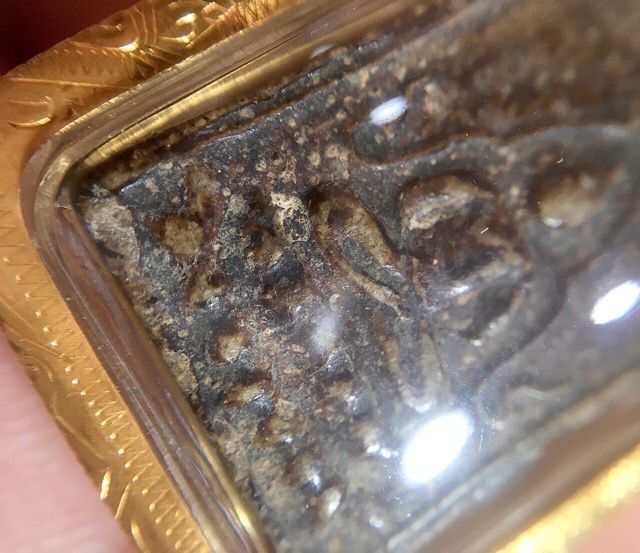
3.2 Distinctive Features and Back Considerations
The crucial characteristic serving as the "decisive point" for authenticating this series is the stamped yantra on the back, which all sources consistently describe as having "deep-stamped yantra (Ang)." This yantra is pressed deep into the amulet material and serves as the most important identification point for collectors.
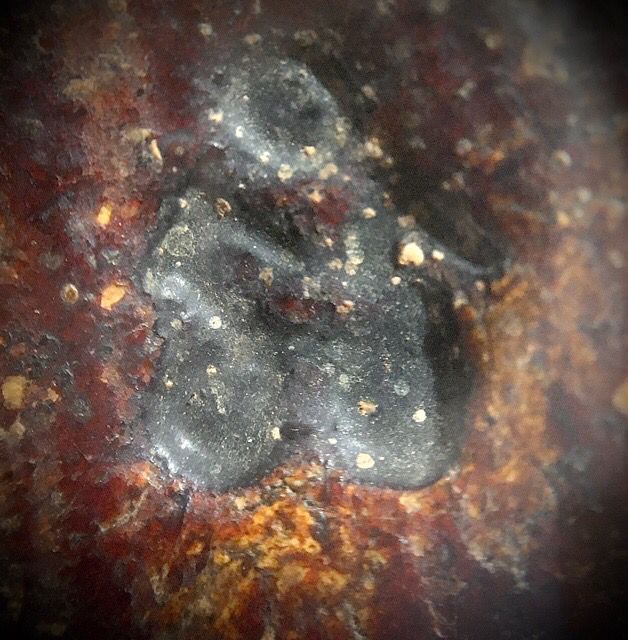
4: Consecration Ceremony: Seeking the Absolute Truth
After thorough investigation of relevant data sources, the following facts were found:
- Information about ceremonies in B.E. 2564 at Wat Pra Sri Rattana Mahatat, Phitsanulok, refers to modern Putta Chinarat creation ceremonies, not related to Venerable Jao Chuy's B.E. 2475 amulets created in Bangkok.
- Lists of contemporary monks who could not possibly have participated in B.E. 2475 ceremonies nearly a century ago.
- Information about later Wat Sam Plerm ceremonies in B.E. 2515 and 2544 refers to different eras entirely.
Research Conclusion: No reliable or verified information from amulet field sources specifically identifies the monks who participated in the consecration ceremony for Pra Pong Rasamee by Venerable Jao Chuy, B.E. 2475. Including unrelated information would constitute "fabricating distorted content," contradicting the strict principles emphasized. Therefore, this report honestly states "no information available" in this section.
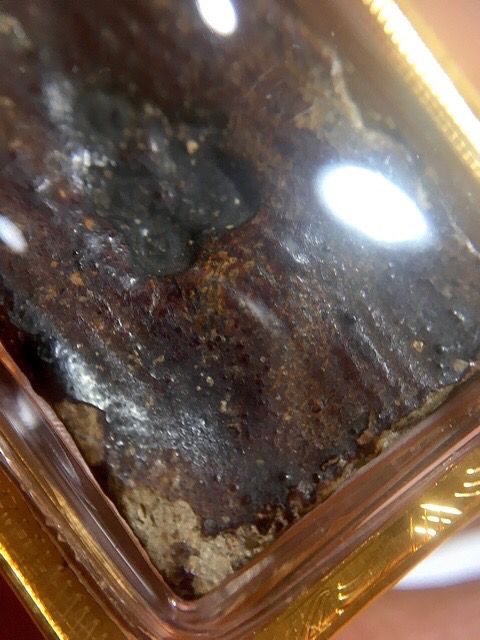
5: Authentication Principles and Conclusion
5.1 Authentication Points
Authentication of Pra Pong Rasamee should focus primarily on mold design and material composition:
- Mold Design: Focus on accepted molds including Phim Leb Mer, Phim Khao Lam Tat, Phim Rasamee, and Phim Sum Chinarat
- Material Composition: Most amulets have powder mixed with or dipped in lacquer, appearing black or dark brown, containing burned palm leaf powder and possibly visible fragments of ancient broken Buddha images
- Back Characteristics: The most decisive point is the "deep-stamped yantra (Ang)" - the unique characteristic of this series
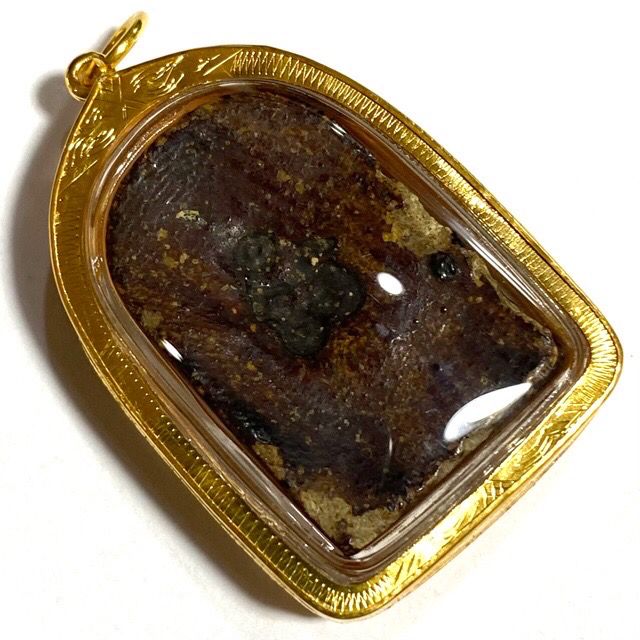
5.2 Recommendations
The true value of Pra Pong Rasamee by Venerable Jao Chuy, Wat Sam Plerm, B.E. 2475 lies not in the list of consecrating monks (which is unclear) but in the authentic sacred lineage and inherited Buddha power.
First: This series was created by Venerable Jao Chuy, a direct disciple who received knowledge transmission from Venerable Jao Ma, creator of the renowned Pra Chaiwat.
Second: This series was made from sacred materials - fragments of broken Wat Sam Plerm Buddha images already consecrated by ancient masters.
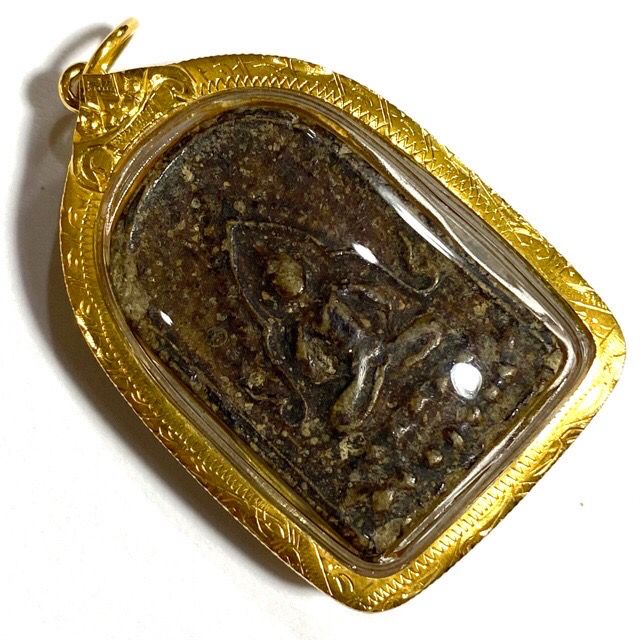
These two factors make Pra Pong Rasamee serve as a worthy "substitute" filled with sacred power and authentic lineage for those wanting to collect Wat Sam Plerm lineage amulets but unable to obtain Venerable Jao Ma’'s rare and highly valued Pra Chaiyawat.

Therefore, collectors are advised to focus on mold design and material composition, considering the amulet's completeness, especially the distinctive back yantra. Given the amulet's age, some surface opening or chipping is natural. If the amulet maintains good condition with natural aging, it is highly worthy of collection.
